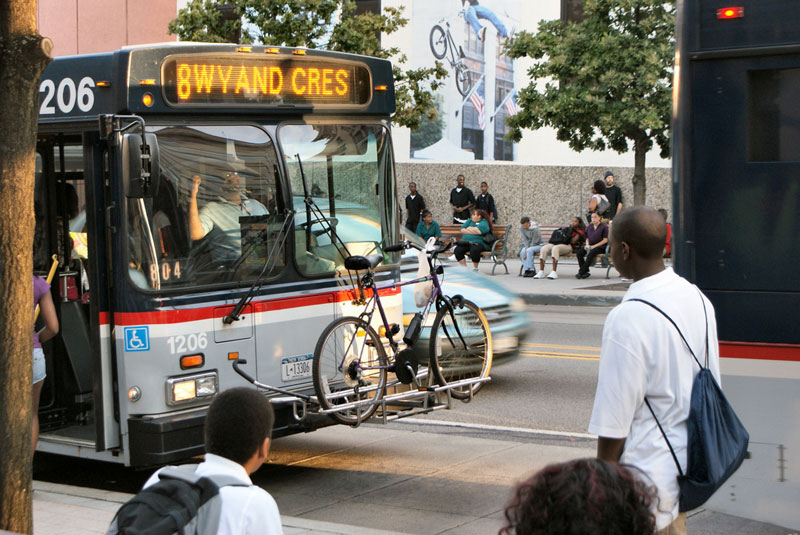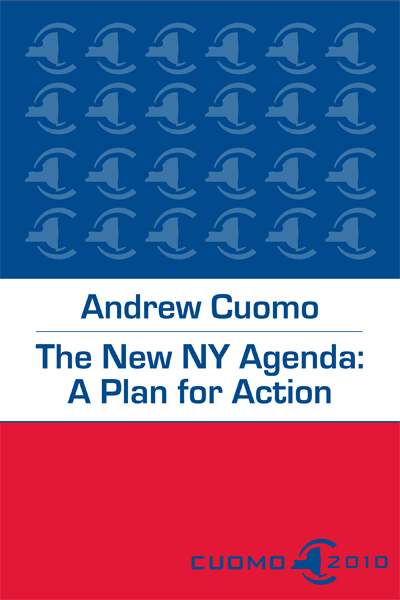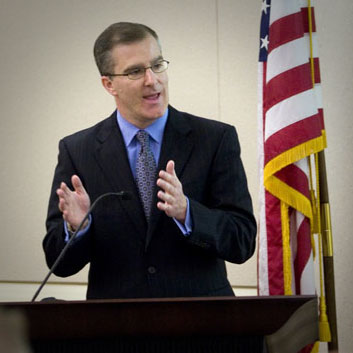This article was scraped from Rochester Subway. This is a blog about Rochester history and urbanism has not been published since 2017. The current owners are now publishing link spam which made me want to preserve this history.. The original article was published November 14, 2010 and can be found here.

I just read an article in Sunday's Albany Times Union that has me scratching my head. Mark Aesch, CEO of the Rochester Genesee Regional Transportation Authority, wants to consolidate

the four big transit authorities of upstate New York--Albany, Syracuse, Rochester, and Buffalo. On the surface it seems to make sense. They each do the same thing in relatively similar cities in a single state. But does Aesch really believe consolidating operations across a 250 mile wide region will lead to better public transit service for all four regions? Or are we witnessing the beginning of a power grab?
Aesch seems to be using Andrew Cuomo's New NY Agenda

as a springboard. Cuomo's plan states:

With the multitude of State agencies that have authority over environment-related issues, conflicts often arise over jurisdiction and responsibility. Furthermore, agencies often issue inconsistent recommendations that make it difficult for the State to consistently administer its environmental policy. As Governor, Andrew Cuomo will examine how the State's various agencies can effectively be streamlined and consolidated to eliminate unnecessary bureaucracy and overlap in order to maximize environmental protection. Andrew Cuomo will also task the Spending and Government Efficiency Commission ("SAGE Commission") to conduct a comprehensive review of the existing environmental bureaucracy and make recommendations for reorganization and better coordination where such coordination would provide for significant cost savings, better management or more efficient operations.
It appears Aesch is making his own recommendation before the Spending & Government Efficiency Commission has a chance to study anything.

His main argument is cost savings. "One payroll and purchasing staff. One voice in leveraging vendors for better pricing. No more duplication of services. No more bureaucratic redundancies. No more overly generous benefits programs. No more feather-bedding

."
Aesch points to the Rochester transit system over the past 5 years where "inefficiencies" have been addressed and fares have actually been lowered thanks to multimillion-dollar surpluses. During the same time fares in Albany, Syracuse, and Buffalo have increased.
But Aesch doesn't go into any details about how huge surpluses have improved service. Or what improvements we could expect to see across upstate under one agency.
Another important question is what would happen to the Genesee Transportation Council (GTC)

, our Metropolitan Planning Organization (MPO)

. All cities with a population over 50,000 are required by the U.S. Department of Transportation to have a designated MPO in order to qualify for federal highway and transit funds. RGRTA

serves as the host agency to GTC--and Albany, Syracuse, and Buffalo each receive federal funding for their transportation projects via their own MPOs. So will a consolidated upstate transit authority mean a consolidated MPO for all of upstate and a redistribution of Federal transit funds?
We know Aesch prides himself on running RGRTA more like a private corporation. And we know this new RGRTA loves to show off its bottom line. But we also know what can happen to the little guy (you and me) when corporations grow too large. Someone will profit. Someone will lose out.
To Aesch's credit, he continues to bring new ideas to the table. But it's up to all of us to ask the important questions. I just learned of this story today along with the people of Albany. I don't have any answers to the questions I've just asked. But if you have thoughts/questions/concerns, I urge you to write to RGRTA or GTC. And let us know what you find out using the comments below.
More About RGRTA...
Until the late 1960's, Rochester's public transportation needs were met by the profit-driven private sector. Mass transit in Rochester began in 1825 when the Rochester and Canal Railroad Company was established to provide passenger and freight service along the Genesee River. Large horse-drawn vehicles were in operation by the 1850's and in 1889 electric streetcars began service. The first buses operated as early as 1905. Rochester City Lines started service in 1923 but soon went bankrupt. A mass transportation system was re-established in 1938 by Rochester Transit Corporation. Ridership had increased to 10 million before financial difficulties led the City of Rochester to take over the company, renaming it Rochester Transit Service or RTS, which would later be known as Regional Transit Service.
In 1969, sweeping state-wide legislation created 4 regional transportation authorities: The Capital District Transportation Authority was founded in Albany, Central New York Regional Transportation Authority in Syracuse, The Niagara Frontier Transportation Authority in Buffalo, and the Rochester-Genesee Regional Transportation Authority, known as RGRTA, was created in our community.


